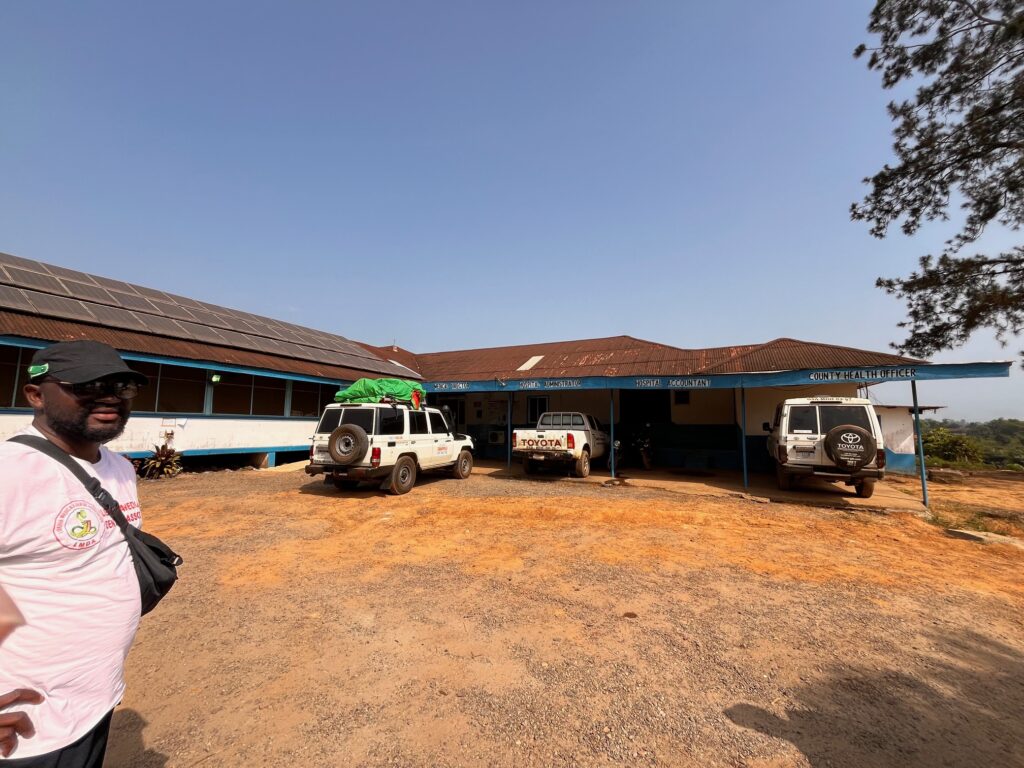Report on Hernia International Expedition to Bomi County, Tubmanburg, Liberia
Dates: 1st December 2024 to 8th December 2024
Team Members
• Ajaiya Mull: UK Anaesthetist
• Ernesto Blas: ODP
• Mahesh Pai: UK Surgeon
• Daniel Pastor: Spanish Surgeon
• Dr Peter George: Local Liaison and Medical Officer at Bopolu
Dr Peter George, a seasoned organiser of similar trips, facilitated our work seamlessly. Having worked with him in Ganta city Nimba County in 2019, it was a pleasure to collaborate again. The local surgeon at Tubmanburg was Dr Shariff.

Summary of Work
We operated on 80 patients, performing 95 procedures:
• 74 inguinal hernias (8 bilateral)
• 5 hydroceles
• 3 lipomas
• 7 other abdominal wall hernias
• 6 gynaecological operations (including myomectomies)
During the period we were there we had no complications.
Location and Logistics
Tubmanburg is a small town approximately 60 km from Monrovia, the capital. Due to the quality of the roads it is a 2-3 hour drive.
• Arrival:
We landed in Monrovia on Saturday night, stayed overnight, and drove to Tubmanburg the following day. Daniel arrived on Monday.
• Work Schedule:
- Started on Monday with 10 cases.
- From Tuesday onward, we operated at full capacity, completing 17–18 cases daily.
- Dr George handled paediatric cases, while Daniel and I focused on adult cases. Dr Shariff performed gynaecological procedures, including myomectomies.
- Dr Mull administered spinal anaesthesia for the vast majority of cases. Ernesto was excellent is providing general support in theatre and ensuring smooth flow throughout along with the local staff.
Facilities

The hospital in Tubmanburg had two operating theatres:
• A smaller theatre (one table) used for paediatric and gynaecological cases.
• A larger theatre with four tables, where 2–3 patients were operated on simultaneously.
While the operating rooms had air-conditioning, conditions were still hot and sweaty. Local staff assisted with scrubbing. The theatres were clean. There was only one theatre light. We used head torches for operating lights.
The local team saw the patients and sent them to theatre. We would review them before surgery, mark them and check the consent. Of note they did not use the WHO checklist. We implemented it for the cases we did. It would need a culture change and local leadership to put this into practice.
Most of the patients came from fair distances and hence were kept in overnight. We prescribed them one dose of antibiotic. They were reviewed the following day by the local team and ourselves.

Accommodation and Meals
• We stayed in a basic but clean hotel with air-conditioned rooms.
• Dr George provided breakfast daily, and we dined out in the evenings at a good local restaurant.
• On the last day, we stayed at a comfortable hotel near the airport, which was convenient for our late-night flight.
Costs
• The trip cost approximately $1,000, excluding flights.
• Carry additional funds for emergencies.

Key Recommendations
1. Supplies:
• Bring sufficient medical supplies, including drapes, surgical gowns, sutures, and gloves.
• Anaesthetists should carry essential drugs, especially local anaesthetics for spinals.
• Be prepared for lost luggage by dividing critical items across team members.
2. Health and Safety:
• Ensure your Yellow Fever vaccination booklet is ready for airport checks.
• Stick to bottled water to avoid illness.
• Stay hydrated as the heat and perspiration levels are high.
3. Travel Tips:
• Roads are in poor condition; bring motion sickness medication if needed.
• Consider staying at an airport hotel for convenience on the final day.

This trip was highly successful, achieving significant clinical outcomes despite logistical challenges. The collaboration between the international team and local staff ensured smooth operations and high-quality patient care.

